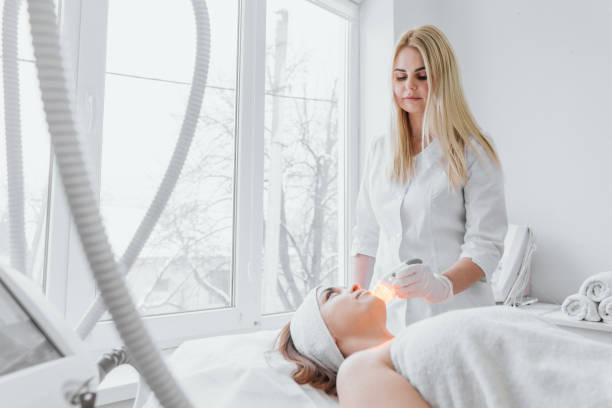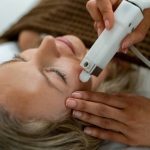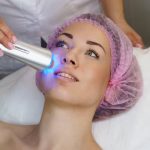What’s cold laser therapy?
Low-intensity laser therapy promotes healing with the use of low levels.
The procedure is known as “cold” laser therapy because the light levels are low and don’t provide enough heat to the tissues of your body. The amount of light used isn’t that high compared to other types used in treatment using lasers like those employed to kill cancerous tumors and coagulate tissues.
Lasers used for aesthetics and surgery treat the affected tissue with heat. As per its name, cold laser therapy is not.
Cold laser therapy can also be referred to as:
- Low-Level Laser Therapy (LT)
- Low-power Laser Therapy (LPLT)
- soft laser biostimulation
- Photobiomodulation
What is the cold laser therapy performed?
In this process, various wavelengths and frequencies of low-level light beams are aimed directly at an area. The light then absorbs the body tissue. Near-infrared and red light triggers a reaction, and damaged cells respond by triggering physiological responses that stimulate regeneration.
Superficial tissue is typically treated using 600 to 700 nanometer (nm) wavelengths. Wavelengths ranging from 780 to 950 nanometers are utilized to achieve greater penetration.
While you may feel the laser device touching your skin, it’s painless and non-invasive. There’s no noise, and you’ll not feel any heat or vibration. The typical treatment takes just about a couple of minutes.
What is cold laser therapy for?
Doctors, dental therapists, physical therapists, dentists, and other medical professionals utilize the cold-laser therapy in various ways. The primary uses of cold laser therapy are for healing tissue and relieving discomfort and inflammation.
Minor injuries and injuries to the ankle and
Physical therapy and sports medicine practices frequently employ cold laser therapy for treatments for minor sprains and injuries, for example:
- ligament sprains
- strains in the muscles
- tendonitis
- bursitis
- tennis elbow
- neck pain
- Lower back pain
- knee pain
- discomfort that is caused by muscular spasms
It also helps to reduce inflammation and speed up healing of joints and soft tissue. Joint and soft tissues.
Inflammation
Dentists employ cool lasers for treating inflamed tissue in the mouth as well as to treat ulcers. Doctors utilize lasers to reduce inflammation caused by Rheumatoid arthritis (RA) and other chronic auto-immune diseases.
Pains and aches
Pain clinics employ Cold lasers to assist patients suffering from chronic or acute pain caused by Fibromyalgia and carpal tunnel syndrome.
Skin rejuvenation
The use of cold laser therapy is to stimulate skin renewal. Dermatologists utilize it to treat a variety of skin conditions, including:
- zits, as well as the acne marks
- psoriasis
- burns
- vitiligo
- edema, which is a swelling swelling of the skin
- Dermatitis and the appearance of rashes
Wound healing
Cold laser treatment is also used to treat difficult or impossible to heal wounds, including damages caused by diabetics.
Acupuncture
Acupuncturists utilize cold laser therapy to treat clients who are uneasy with needles. Laser beams of low intensity can stimulate your acupoints just like needles, but without harming the skin.
Future uses
The potential of new applications of cold laser therapy is infinite. Researchers are currently studying the usage in the hope that it will aid in treating a range of conditions and ailments, such as:
- traumatic brain injury (TBI)
- spinal cord injury
- Alzheimer’s Disease
- Parkinson’s Disease
Is cold laser therapy right for you?
The treatment with cold lasers is increasing in conventional medical practices as an alternative or complementary treatment. FDA approves it. U.S. Food and Drug Administration (FDA) for a range of ailments.
Laser therapy for colds is safe when performed under the supervision of a physician or a licensed practitioner. It’s a plus that it’s non-invasive and painless. It doesn’t require medications or any other treatment.
However, cold laser therapy should not be utilized on cancers or tumors. It is also advised to avoid it for eyes, thyroid, or eyes to prevent home use. Since the impact of treatment with cold light on babies is not known, it is recommended to avoid pregnant women from this kind of treatment.
One drawback of this treatment could be the time. Although each treatment takes a few minutes, it could be up to an entire month (with up to four treatments per week) before you can gauge the effectiveness of this therapy.
Also, it may be excluded from your insurance.
Can the use of cold laser therapy by a person at home?
Cold laser therapy equipment is widely available for being used at home. If you want to purchase one for your at-home use, there are some essential things to consider.
The first is that lasers differ in output, and some need to provide the power they claim to have. Many aren’t laser LEDs or light-emitting diodes (LEDs).
In addition, certain cold therapy products sold to home use offer bold claims about the benefits they can accomplish.
Some are promoted to aid you in reducing pounds, stop smoking and increase your hair. Some advertise that they can help treat headaches, high blood pressure, and other ailments like wrinkles. Some of these claims could be unsubstantiated.




